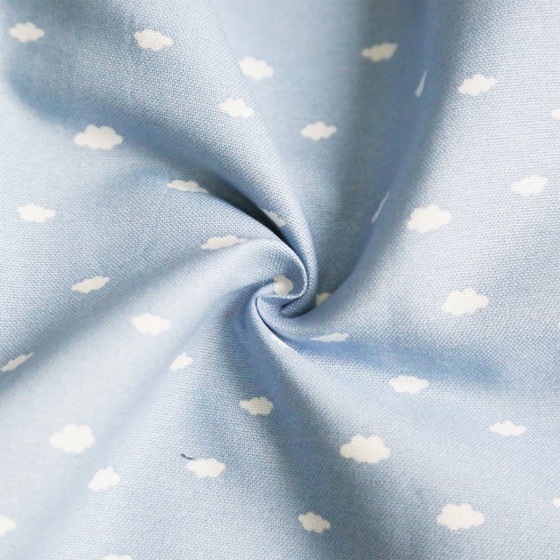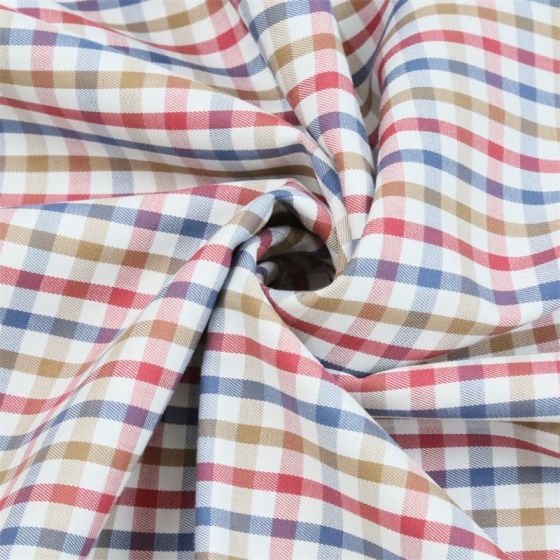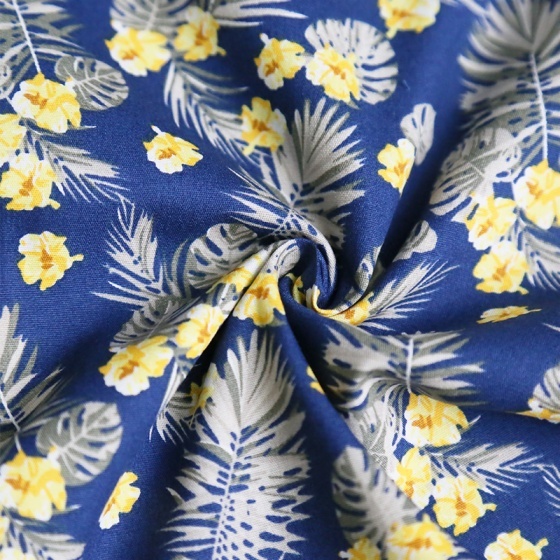From Concept to Creation: Designing with Digital Printed Fabric
Jul 29,2025
From Concept to Creation: Designing with Digital Printed Fabric
Table of Contents
- 1. Introduction to Digital Printed Fabric
- 2. Understanding Digital Printing in Textiles
- 3. Benefits of Digital Printed Fabric
- 4. The Design Process: From Inspiration to Digital Design
- 5. Choosing the Right Fabric for Your Design
- 6. Preparing Your Design for Printing
- 7. The Printing Process: Transforming Design into Reality
- 8. Post-Printing Finishing Techniques
- 9. Case Studies: Successful Uses of Digital Printed Fabric
- 10. The Future of Digital Printing in Textiles
- 11. Conclusion
- 12. FAQs
1. Introduction to Digital Printed Fabric
Digital printed fabric represents a cutting-edge advancement in the textile industry, merging traditional fabric design with modern technology. **As designers**, we can now create intricate patterns and vibrant colors that were once impossible with conventional printing methods. This article explores the **step-by-step journey** of creating beautiful designs using digital printing techniques, empowering you to bring your visions to life.
2. Understanding Digital Printing in Textiles
Digital printing in textiles involves printing directly onto fabric using **digital inkjet technology**. Unlike traditional methods, which require screens and plates, digital printing allows for customization in real-time. This means that designs can be modified easily, enabling rapid prototyping and production. Additionally, it uses less water and energy, making it a more sustainable choice in fabric manufacturing.
The Technology Behind Digital Printing
The technology utilizes specialized printers that apply dye or pigment directly to the fabric. This process offers **high resolution and precision**, ensuring that every detail of your design is captured. Digital textile printing can be divided into two main categories:
- **Dye-sublimation**: Best suited for synthetic fibers, this technique infuses dyes into the fabric, resulting in vibrant colors and a soft finish.
- **Direct-to-fabric (DTF)**: This method allows for printing directly onto natural fibers, providing versatility in fabric selection.
3. Benefits of Digital Printed Fabric
Choosing digital printed fabric comes with a myriad of advantages. Here are some key benefits that make it an attractive choice for designers:
Customization and Flexibility
With digital printing, you can create unique, bespoke designs tailored to specific customer needs. This flexibility enables **limited edition runs** or even one-off pieces, appealing to niche markets.
Shorter Production Times
Digital printing significantly reduces the lead time from concept to final product. This rapid production capability means that designers can respond quickly to market trends and consumer demands.
Cost-Effectiveness for Small Runs
For designers working on small batches, digital printing can be more cost-effective than traditional methods, which often require large minimum orders. This allows for experimentation without substantial financial risk.
4. The Design Process: From Inspiration to Digital Design
Creating a design for digital printed fabric begins with inspiration. This section outlines the essential steps in the design process.
Gathering Inspiration
Inspiration can arise from various sources, including nature, art, architecture, and cultural trends. **Mood boards** and sketchbooks are invaluable tools for capturing these ideas.
Sketching Your Ideas
Once you have a clear vision, start sketching your designs. This can be done traditionally or digitally. Utilizing software like Adobe Illustrator or Photoshop allows for **precise adjustments** and color explorations.
Creating Digital Patterns
Transform your sketches into digital patterns. Utilize vector graphics for scalability without losing quality. Pay attention to color palettes and repeat patterns, ensuring they align with your overall vision.
5. Choosing the Right Fabric for Your Design
The fabric selection plays a crucial role in the final appearance and feel of your printed design. Here are the factors to consider:
Fabric Type
Different fabrics absorb ink differently. Common choices include cotton, polyester, silk, and blends. **Cotton** is ideal for vibrant prints, while **polyester** excels in dye-sublimation processes.
Fabric Weight and Texture
Select a fabric weight that suits your design's purpose. Lightweight fabrics work well for draping, while heavier fabrics are better for structured garments. The texture can also impact the final look; smooth fabrics yield sharper prints, while textured fabrics may create a softer appearance.
6. Preparing Your Design for Printing
Before sending your design to print, thorough preparation is essential.
Color Management
Ensure you work within the correct color profiles to maintain color accuracy. Use CMYK color mode for print designs and perform test prints to verify color matching.
File Formats and Resolution
Save your designs in appropriate file formats (like TIFF or PNG) and ensure a high resolution (at least 300 DPI). This guarantees crisp, clear prints with no pixelation.
7. The Printing Process: Transforming Design into Reality
Once your design is ready, it’s time to bring it to life through the printing process.
Choosing the Right Printer
Select a printer capable of handling the specific fabric and desired print quality. Consult with printing professionals to find the best match for your needs.
Printing Techniques
The actual printing process will vary depending on the technique chosen. Ensure that you monitor every step for quality control and consistency.
8. Post-Printing Finishing Techniques
After printing, various finishing techniques can enhance the final product.
Cutting and Sewing
Carefully cut the fabric following your design specifications. Skillful sewing techniques will ensure that your final product reflects your original vision.
Finishing Treatments
Consider applying treatments such as water repellents or anti-wrinkle finishes to enhance the fabric's performance. These additional steps can add value and functionality to your designs.
9. Case Studies: Successful Uses of Digital Printed Fabric
Examining real-world applications of digital printed fabrics can inspire and inform your designs.
Fashion Industry Success
Many designers have used digital printing to create signature pieces that stand out on runways. Brands like **Dior** and **Alexander McQueen** have integrated unique digital prints to elevate their collections.
Interior Design Innovations
Digital printed fabrics are making waves in interior design as well. Custom upholstery and drapery featuring vibrant patterns can transform spaces and reflect personal styles.
10. The Future of Digital Printing in Textiles
The future of digital printing in textiles looks promising, with advancements in technology continually improving capabilities.
Sustainability Trends
As environmental concerns rise, digital printing offers an eco-friendlier alternative to traditional methods. Innovations in inks and processes will likely focus on reducing waste and energy consumption.
Integration of AI and Automation
Expect to see increased use of artificial intelligence in the design process. AI can streamline workflow, predict trends, and assist in color matching, revolutionizing how designers approach their craft.
11. Conclusion
Designing with digital printed fabric is an exciting and innovative journey that opens up endless creative possibilities. From the initial concept to the final printed product, every step is filled with opportunities to express individuality and artistry. As we embrace this technology, we can look forward to a future where fabric design is more personalized, accessible, and sustainable.
12. FAQs
1. What types of fabrics can be used for digital printing?
Digital printing can be used on a variety of fabrics, including cotton, polyester, silk, and blends. The choice of fabric depends on the printing technique and desired outcome.
2. How does digital printing compare to traditional printing methods?
Digital printing allows for greater customization, faster production times, and lower costs for small runs compared to traditional methods, which often require screens and plates.
3. Can I print my designs at home?
While home printers can handle fabric printing, professional digital printers provide superior quality and precision for larger prints and complex designs.
4. Is digital printing environmentally friendly?
Yes, digital printing is generally more sustainable than traditional methods, as it uses less water and energy and generates less waste.
5. How can I ensure color accuracy in my prints?
Use color management systems, work within appropriate color profiles, and conduct test prints to ensure color accuracy across your designs.
Incorporating these elements into the design process will help you harness the full potential of digital printed fabric, creating stunning pieces that resonate with your audience.
More Events
From Concept to Creation: Designing with Digital Printed Fabric
From Concept to Creation: Designing with Digital Printed Fabric Table of Contents 1. Introduction to Digital Printed Fabric 2. Understanding Digital Printing in Textiles 3. Benefits of Digital Printed Fabric 4. The Design Process: From Inspiration to Digital Design 5. Choosing the Right Fabric for Your Design 6. Preparing Your Design for Printing 7. The Printing Proces
Jul 29,2025
Exploring the Versatility and Benefits of Cotton Dyed Fabric in Textile Industry
Cotton dyed fabric is a versatile material that has gained significant traction in the textile industry due to its vibrant colors, softness, and breathability. The dyeing process can be applied in various ways, leading to a wide range of textures and patterns that cater to different market demands. One of the primary methods used in dyeing cotton fabric is reactive dyeing, which forms a strong cov
Jul 28,2025
Unleashing Your Creativity with Custom Printed Cloth Fabric: A Comprehensive Guide
Unleashing Your Creativity with Custom Printed Cloth Fabric Custom printed cloth fabric has revolutionized the way we approach design and creativity. By offering infinite possibilities for personalization, custom fabric allows individuals and businesses to express their unique style and elevate their projects. Whether you are a designer, a DIY enthusiast, or a business looking for branding opportu
Jul 27,2025
Do Not Heasite To Contact W&S, Your Comprehensive Solution Provider Now!
We like produce phone cases but we more like to see you earn lots of money by working with us.
Quick Link
Garment
Copyright © Nantong Wang and sheng Textile Co., Ltd. All Right Reserved.

Whatsapp: 008613861954999
Looking forward to your call
Tel: 0086-513-80609999
Looking forward to your call
Email: Nick.wang@ntwangsheng.com
Looking forward to your letter





